#King Henry VI
Text



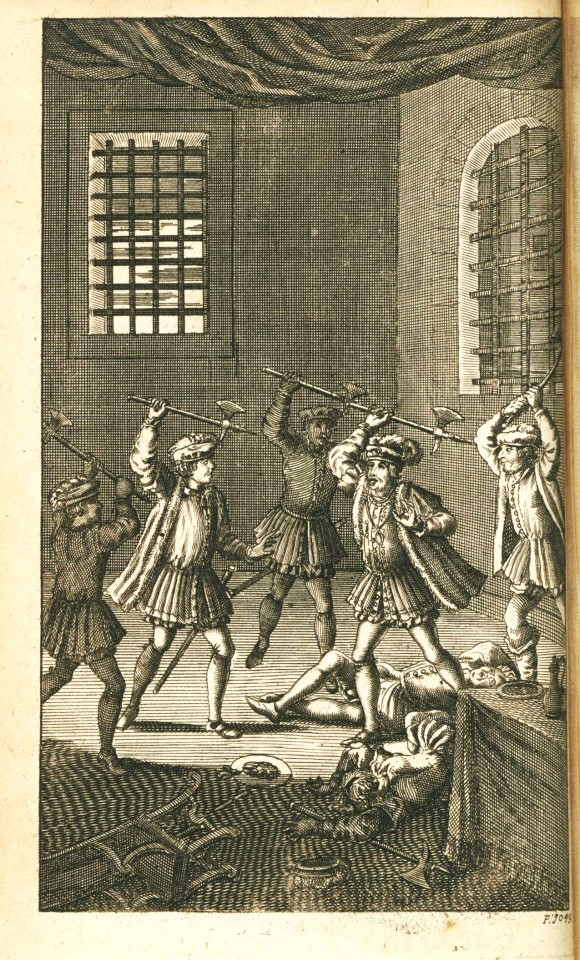
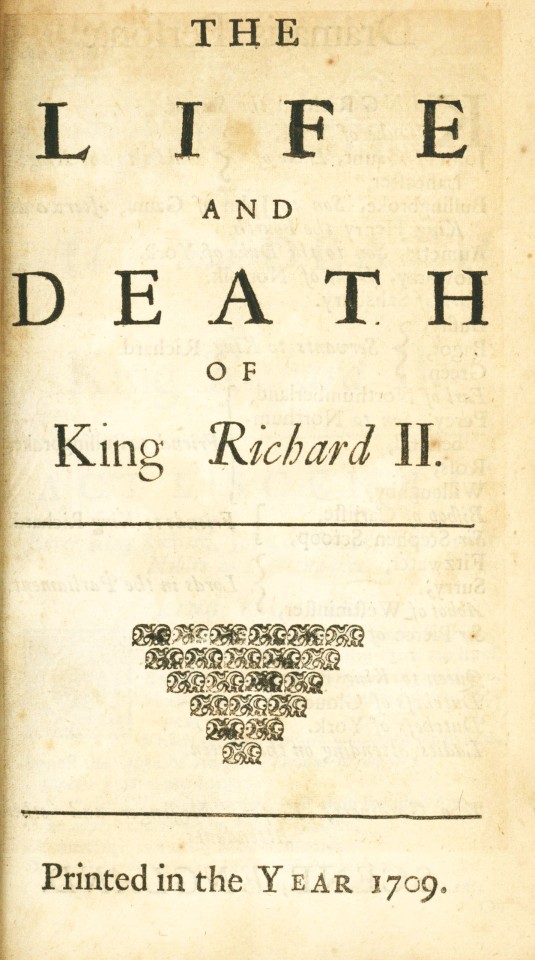



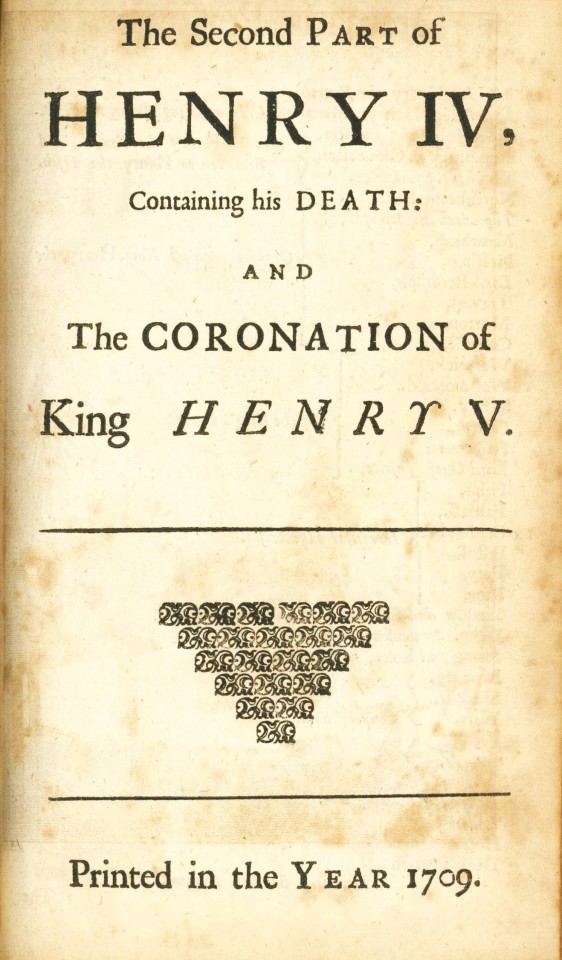

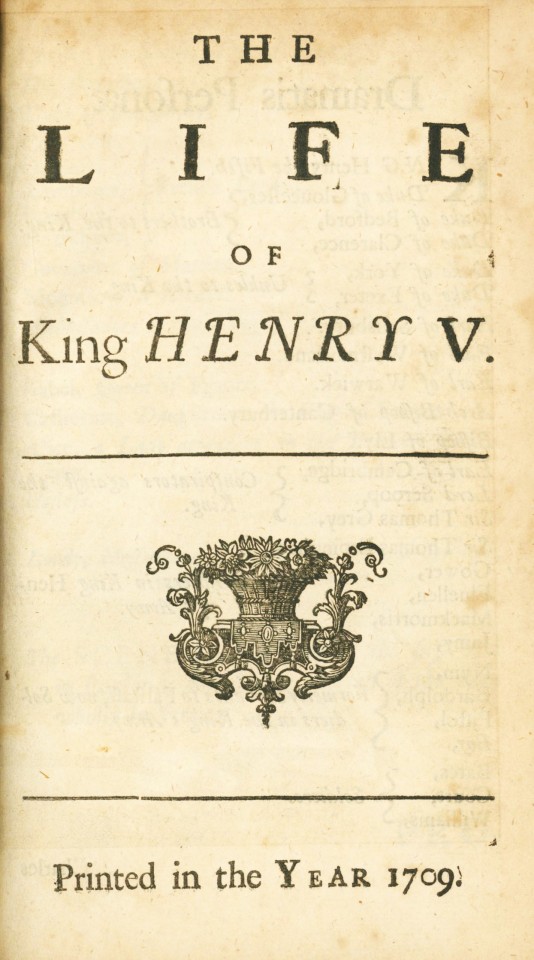
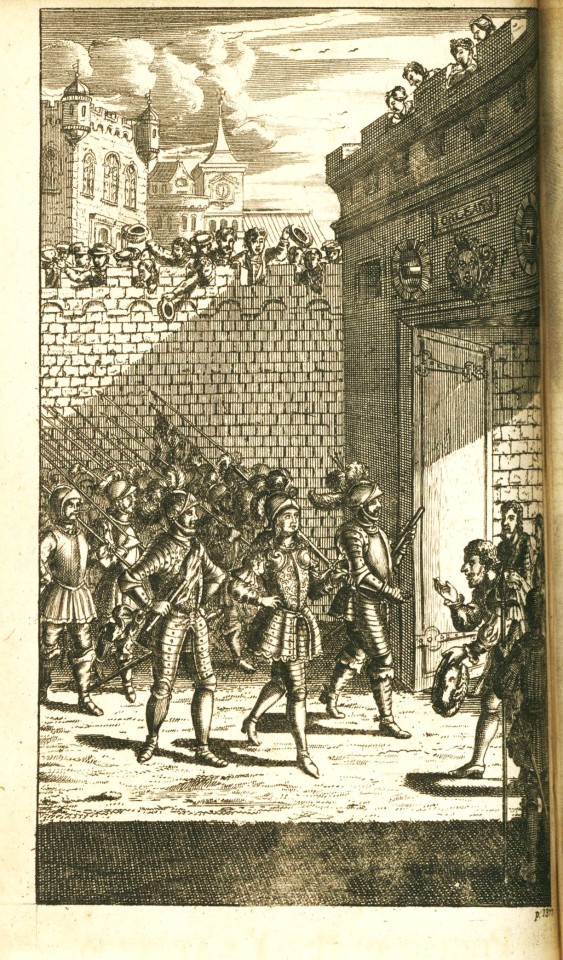



Shakespeare Weekend
We are halfway through Nicholas Rowe’s (1674-1718) The Work of Mr. William Shakespear; in Six Volumes! Published in London in 1709 by Jacob Tonson (1655–1736), this second edition holds an important place within Shakespearean publication history. The Work of Mr. William Shakespear; in Six Volumes is recognized as the first octavo edition, the first illustrated edition, the first critically edited edition, and the first to present a biography of the poet.
This week, we explore the third volume of The Work of Mr. William Shakespear; in Six Volumes. The third volume encompasses historic plays including a Shakespearean Henriad depicting the rise of English kings. The volume is comprised of King John, King Richard II, Henry IV Part I, Henry IV Part II, King Henry V, King Henry VI Part I, and King Henry VI Part II. While the plays have recurring characters and settings, there is no evidence that they were written with the intention of being considered as a group. A full-page engraving, designed by the French Baroque artist and book illustrator François Boitard (1670-1715) and engraved by English engraver Elisha Kirkall (c.1682–1742), precedes each play.
In addition to Rowe’s editorial decisions to divide the plays into scenes and include notes on the entrances and exits of the players, he also normalised the spelling of names and included a dramatis personae preceding each play. The only chronicled critique of Rowe’s momentous editorial endeavor is his choice in basing his text on the corrupt Fourth Folio.


View more volumes of The Works of Mr. William Shakespear; in Six Volumes here.
View more Shakespeare Weekend posts.
-Jenna, Special Collections Graduate Intern
#shakespeare weekend#nicholas rowe#the works of mr. william shakespear#king john#king richard II#Henry IV#King Henry V#King Henry VI#jacob tonson#henriad#François Boitard#Elisha Kirkall#engravings
61 notes
·
View notes
Text
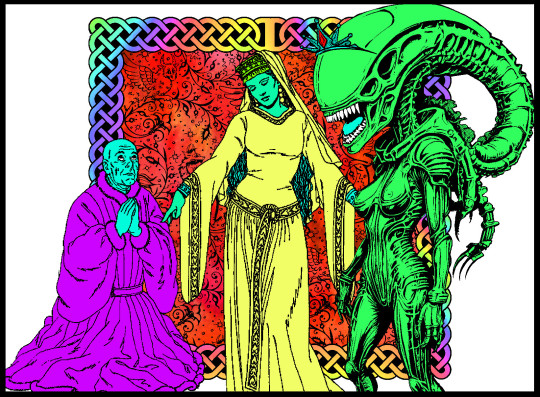
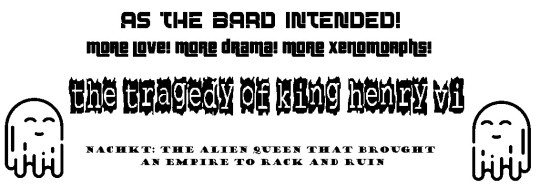

Text:
As the Bard intended!
More love! More Drama! More Xenomorphs!
The Tragedy of King Henry VI
Nachkt: the Alien Queen that brought an empire to Rack and Ruin.
It's no use calling him, "good Suffolk." What? How the hell do you think I wouldn't notice that you two are having an affair at court? Maybe there's another eight foot tall alien queen that Suffolk is causing major embarrassment with?
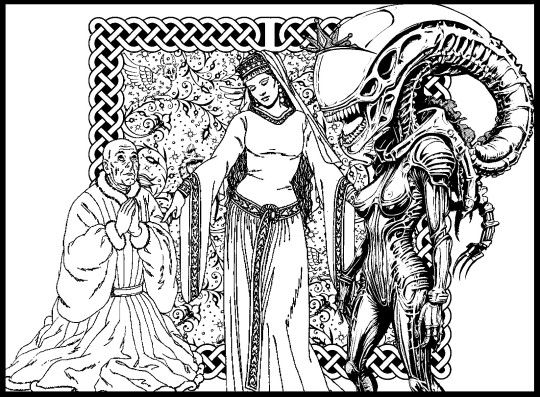
#shakespeare#king henry vi#drama#love#xenomorphs#taken from notes scribbled on a napkin#translation#translated from original Galactic Basic#myart
16 notes
·
View notes
Text
I think the Hollow Crown was Tom’s audition for The Sandman and no one can convince me otherwise.
#sandman#the sandman netflix#lord morpheus#dream of the endless#the hollow crown#king henry vi#tom sturridge#he smiles a lot more in this show but he's just as traumatized#he can successfully play an eighteen-year-old boy#he looks pretty with long hair too#I actually understand this episode#basically you can't trust anyone
11 notes
·
View notes
Text

child king
47 notes
·
View notes
Text

Castle Combe; often named as the ‘Prettiest Village in England.'
Castle Combe, a medieval village and civil parish within Cotswolds area of outstanding natural beauty in Wiltshire, England.
The village has a rich history and the houses are made up of the honey coloured Cotswold stone, typical for a village of this area.
The village takes its name from a castle built on the hill to the north of the village in the 12th century AD, of which little now remains except earthworks.
No new homes have been built in the historic area since 1600s AD.
During the Middle Ages, the village, along with much of the Cotswolds, enjoyed prosperity due to the growth of a thriving wool industry.
Within Castle Combe, you’ll find a Market Cross and St Andrew’s Church, which dates from the 13th century AD.
The church houses a faceless clock, which is reputed to be one of oldest working clocks in the country.
Numerous weavers’ cottages were erected from local stone, and these ancient honey-hued buildings remain one of the village’s standout features today.
The village was known in particular for manufacturing a red and white cloth known as ‘Castlecombe,’ which was renowned in the markets of Bristol, Cirencester, as well as London and abroad.
In 1440 AD, King Henry VI granted Castle Combe the right to hold a weekly market, with unmistakable Market Cross monument still standing proudly today.
Castle Combe strictly banned all modern attachments such as TV dishes and external wires to the exterior of its houses, restrictions that have been instrumental in helping the historic village to maintain its authentic appearance.
As a result, the village has become a popular location for film crews, with productions including the 1967 filmed musical Doctor Dolittle, Stardust, and The Wolf Man were all shot within the village.
Castle Combe was a key filming location for Stephen Spielberg’s War Horse.
To recreate a 1914 setting, the village’s tarmac through-road was closed and covered with a temporary muddy surface.
Its modern street lamps, signage, and post boxes were either covered or removed altogether. Its white window frames were repainted with more muted colours.
📷 : Credit to the Owner
#Castle Combe#Cotswolds#Wiltshire#England#medieval village#Middle Ages#Market Cross#St Andrew’s Church#Castlecombe#King Henry VI#filming location#weekly market#market town#12th century#1100s#medieval history#medieval architecture#stone buildings#English village
4 notes
·
View notes
Text
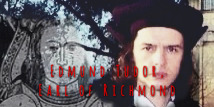

“By 1452 both Jasper and Edmund had entered their twenties and proven 'their most noble character... [and] most refined nature'. Partly out of respect for his mother's memory Henry decided to elevate his half-brothers' status.
On 5 January 1453, Henry brought the Tudors to the Tower of London, where they were knighted in a heavily ritualized ceremony with a number of other young courtiers. The timing and circumstances of his brothers' knighthood suggests there was as much political as personal imperative to the occasion. Although two of the other youths to be spurred and presented with a sword on this occasion were loyal Lancastrians, a number of the Tudors' companions in knighthood were associated with the duke of York, perhaps singled out to restore their loyalty at York's expense.
William Herbert was the heir of one of York's former councillors and he was joined by two of York's Neville nephews, John and Thomas, younger sons of the earl of Salisbury. The date of the ceremony was also significant, for Epiphany was the feast of three kings, when English monarchs traditionally held a public crown-wearing. By holding a ceremony that forged binding ties of martial loyalty on the vigils of a feast exalting kingship, Henry was making a powerful association of his rule with military and chivalric values.
In honour of this occasion, Henry also endowed his brothers with estates, creating Edmund earl of Richmond and Jasper earl of Pembroke. These were royal demesnes that had previously been held by Henry's uncles, the dukes of Bedford and Gloucester. Edmund was granted one more sign of royal affection: a bride.
His chosen spouse at first sight does not seem ideally suited, since she was nine years old and already engaged to someone else. Edmund's intended was Margaret Beaufort, the sole heir to the unfortunate John Beaufort, duke of Somerset, who had died- possibly at his own hand after commanding the disastrous expedition to France in 1443.
On 12 May 1453 Henry authorized the payment of 100 marks for Margaret's 'arrayment' so she could have the necessary fine clothing to attend court with her mother.
By then Margaret's previous union, to the son of the late duke of Suffolk, had been dissolved, and her wardship granted to the Tudors instead. In 1455, when Margaret was barely of legal age, at twelve years old, she and Edmund married.
By uniting the lines of his half-brother and the Beaufort heiress, Henry established an alternative line of succession for the crown. Through his infant wife, Edmund Tudor gained a claim to the throne which his half-blood connection to Henry did not provide. The founding of this rival Beaufort dynasty must have had the approval of Margaret's uncle Somerset; as it ensured a family stake in a potential future queen of England, the appeal for him was obvious.”
Johnson, Lauren. “Shadow King: Life and Death of Henry VI.”
#tudor dynasty#Plantagenet dynasty#Plantagenets#house of lancaster#cousin’s wars#wars of the roses#Henry VI#King Henry VI#King Henry VI of England#Edmund Tudor#Jasper Tudor#Margaret Beaufort
28 notes
·
View notes
Text

11 notes
·
View notes
Text
Eleanor Cobham has always got what she wanted; a new dress, a place at court, somebody else's husband. But not now. In her desperation to conceive an heir, she turns to witchcraft and is soon embroiled in its throes. As she comes face to face with the dangerous side of power, will she learn if she can control the turn of fortune's wheel?
This was such an interesting & funny listen! Loved how the story was told & the tone/voice of the narrator (a.k.a. Eleanor). Cannot recommend this enough!
#british royal family#eleanor cobham#eleanor duchess of gloucester#humphrey duke of gloucester#king henry vi#spotify#saga.txt
3 notes
·
View notes
Text
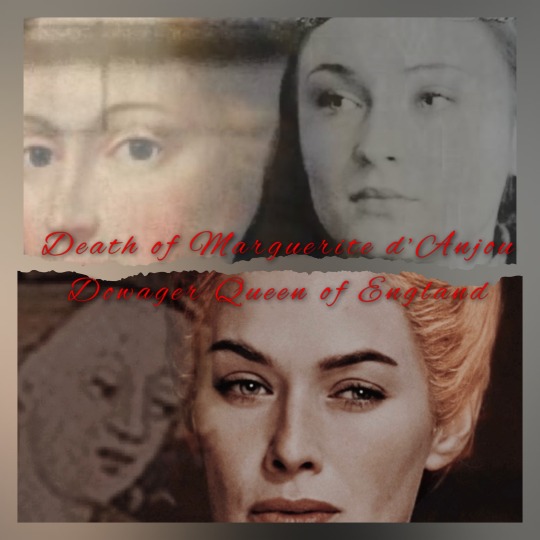
“24 August 1482
From the fairytale turrets of Saumur Castle, atop which golden fleur-de-lys glistened in the summer light, to the bulbous towers of Angers, where the château loomed on a cliff edge above the River Loire, the funeral cortege of Margaret of Anjou carried the queen on her last journey.
For six years she had been exiled back to the lands in which she grew up, a half-welcome guest of her father and King Louis, with little more than hunting dogs, books and a casket of relics to remind her of past glories. She was going now to rejoin her ancestors. Her last request to King Louis was that he would allow her to be buried with her parents: in their sepulchre at Angers Cathedral.
Since her capture at Tewksbury in 1471 Margaret's life had become one of solitary retirement. She had not stayed long in the Tower of London, although she must have been there when Henry was killed.
For a time she was kept at Windsor Castle, and by January 1472 she had moved to Wallingford in Oxfordshire, where her keeper was her old friend, Alice Chaucer, dowager duchess of Suffolk.
The women had once been close, Alice perhaps even having something of a maternal place in Margaret's heart. Since Suffolk's murder their lives had taken very different courses, and their enforced time together during Margaret's imprisonment cannot have been entirely happy.
Where Margaret had resisted the Yorkist regime with all her strength, Alice had come to terms with it even before Henry VI was first deposed. In 1458 Alice had overseen the marriage of her only child, John, to York's daughter Elizabeth. At the time this must have seemed a dangerous move, but her gamble had paid off. Her son still lived, a prominent member of the court of King Edward IV, and a king's brother-in-law.
Margaret, by contrast, had lost her family to the wars. Under house arrest, she was reliant on Edward to provide her with enough money to cover the expenses of herself and her servants.
One of those servants was Lady Katherine Vaux. Katherine had lost her husband, Margaret's old servant Sir William, at Tewksbury and the pair were bound so tightly together, whether through shared grief or the loyalty of many years' service, that Katherine stayed with Margaret until the end.
The pair of them probably appear in an image in the Guild Book of the London Skinners' Fraternity in 1475. Margaret wears an ermine-lined dark gown, her head covered like a nun, kneeling forward to read a religious text from her prayer book while a discarded crown and sceptre lie beside her. Behind Margaret is a more fashionably dressed woman, evidently in attendance on the queen, with her prayer book in her hands, her eyes more on her mistress than her prayers.
Both Katherine and Margaret were members of this fraternity in honour of the Assumption of the Virgin Mary who Margaret, like Henry, always particularly revered. As this image in the Skinners' record suggests, Margaret's imprisonment under Edward IV was not especially stringent.
Other members of the Skinners' Guild Fraternity included Queen Elizabeth Woodville and her ladies, so the fraternity would not have risked their ire by welcoming Margaret without their consent.
Margaret was provided with clothing, mostly black, at royal expense and had enough freedom not only to join this guild but also to enjoy the services of the dean of Edward's chapel in 1474. Having moved from Wallingford to London for most of the intervening years, in 1475 an international treaty between Edward and Louis XI was finalized that ransomed Margaret to Louis for £50,000.
In return for being able to return to her father's territories with a small pension from Louis, Margaret was forced to renounce all of her claims not only in England but also in France. The woman who had clung so tenaciously to her family's right to the English crown was now willing to give up virtually everything she owned to go home. After all, there was no one to inherit her titles or lands after her death. Thus, in November 1475, she was transferred into the keeping of Sir Thomas Montgomery to be escorted to France.
For several years Margaret lived in her father's castle at Reculée, near Angers, but when René died in 1480 she had to rely on one of his servants to provide her literary interests. Some years earlier she had commissioned the Burgundian memoirist Georges Chastellain to write Le Temple de Bocace, a consolation piece dwelling on the changing fortunes of the world and the unjust criticism that had been levelled at her.
Presumably she also occasionally rode or hunted through the verdant rolling fields and woodland surrounding her, enjoying at least one pastime from her old life. Margaret may have ridden from her modest home at Dampierre to the more imposing Château Montsoreau on the banks of the River Loire, over time she developed enough of a relationship with he castle's owner, Madame de Montsoreau, to gift her all of her hunting dogs shortly before her death - a high-status offering for a lady who had perhaps been a friend in the queen's last years.
In the summer heat of 1482 Margaret fell ill and, with the faithful Katherine Vaux at her side, she made her last will and testament on 2 August. Louis XI, who had once mocked her proud writing style, would have found little to displease him in the humble petitions that filled this short document.
'Sound of mind, reason and thought, however weak and feeble of body', Margaret asked to be buried in the cathedral church of St Maurice in Angers beside her parents, 'in whatever manner it pleases the king to ordain, or in another place if he prefers'.
She wrote that she did not have enough money to cover the cost of the funeral and suggested that Louis sold her remaining possessions to pay for her burial - as indeed he did.
And perhaps thinking of Lady Katherine, she 'recommend(ed] very humbly and affectionately' her 'poor servants... to the good grace and charity of the said King'. She had evidently lived on the charity of others for some time, and implored Louis, as her sole heir, to cover any remaining debts she had incurred.
Louis did as Margaret asked and had her honourably buried with her parents, but he insisted on reclaiming the hunting dogs that she had gifted to Madame de Montsoreau. 'You know (Margaret] has made me her heir, the king reminded Montsoreau in a letter written days before the queen actually died, 'and that this is all I shall get; also it is what I love best. I pray you not to keep any back, [or] you would cause me a terribly great displeasure’.
Even in death, Henry and Margaret were the pawns of others.”
JOHNSON, Lauren. “Life and Death of Henry VI”.
Fan cast: Sophie Turner as young Marguerite and Lena Headey as Queen Marguerite.
#margaret of anjou#Marguerite d’Anjou#reine marguerite d'angleterre#queen Marguerite#queen margaret of Anjou#queen margaret#house of lancaster#Plantagenet dynasty#wars of the roses#cousin’s wars#Katherine vaux#Alice chaucer#Edward iv#Elizabeth of York#duchess of Suffolk#Henry VI#king Henry VI#Louis XI of France#Louis XI
19 notes
·
View notes
Text
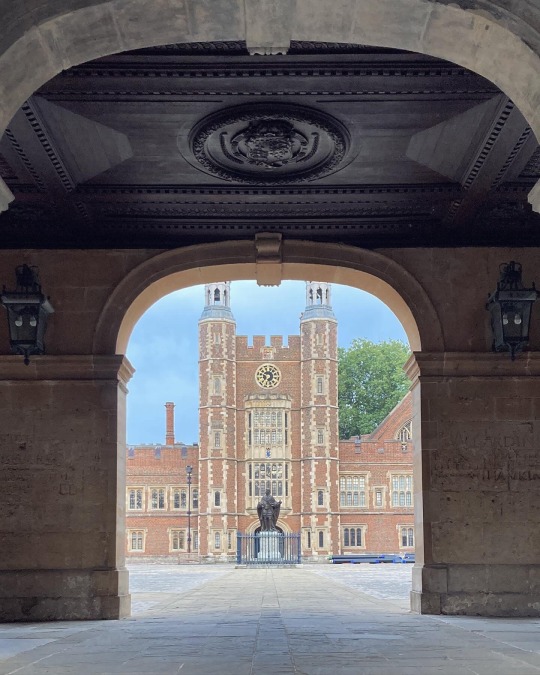


Eton College holds a cherished place in the annals of His Serene Highness the Count of Münnich and Reutern’s family history, with their connection dating back to its very foundation.
The illustrious Founder of Eton College, King Henry VI, is His Highness’s seventeenth great uncle. This noble lineage traces its roots through his half-brother, The Count’s seventeenth great-grandfather, Edmund Tudor, 1st Earl of Richmond. Notably, King Henry VI was also a great-grandson of His Serene Highness’s eighteenth great-grandfather, John of Gaunt, 1st Duke of Lancaster.
The family’s ties to Eton College have remained steadfast across generations. Many generations of The Count’s grandfathers and extended family members were privileged attendees of this institution. From those bygone days to the present, Eton College continues to hold a special place in the hearts of His Serene Highness’s family.
#eton college#count joshua von reutern#the count of reutern#graf von reutern#joshua wood#josh wood#comte de reutern#joshua edward dylan wood#graf von münnich#joshua dylan wood#josh wood film producer#King Henry VI#King Henry VI of England#Henry VI#His Excellency The Count of Münnich and Reutern#Seiner Erlaucht Herrn Graf von Münnich und Reutern#Edmund Tudor 1st Earl of Richmond#John of Gaunt 1st Duke of Lancaster#Prince William#Prince Harry#Duke of Cambridge#Duke of Sussex#Prince of Wales#Son Altesse Monseigneur Comte Joshua de Münnich#Son Altesse Monseigneur Comte Joshua de Münnich et Reutern#Son Altesse Monseigneur le Comte de Münnich et Reutern#Münnich-Reutern#Reutern-Nolcken#Grey#Wood
2 notes
·
View notes
Text
Forcing King Henry VI to instead be a medieval physician and over-foraging in bushes constantly for materials in Sims Medieval is apparently what I choose to do with my adult life.

#inspired by requiem of the rose king#requiem of the rose king#Richard is the king#obvs#I mean what’s the point if not#King Henry VI#baraou no souretsu#sims#sims medieval
14 notes
·
View notes
Text

painting practice with a non tragic shakespeare couple. Henry is the real sweet guy to Richard's angry little man who wants to fight everyone.

+reference photo!
#fanart#requiem of the rose king#rotrk#henry vi#richard iii#king richard iii#king henry vi#i want some historian to look up either of theses shakespeare plays and#they just see gay fanart
6 notes
·
View notes
Text
thinking about that jeanne d'arc video game where King Henry VI looked like this

5 notes
·
View notes
Text
I started reading shakespeare, and I love the use of saucy. I hope it meant the same back then as it does now

6 notes
·
View notes
Text
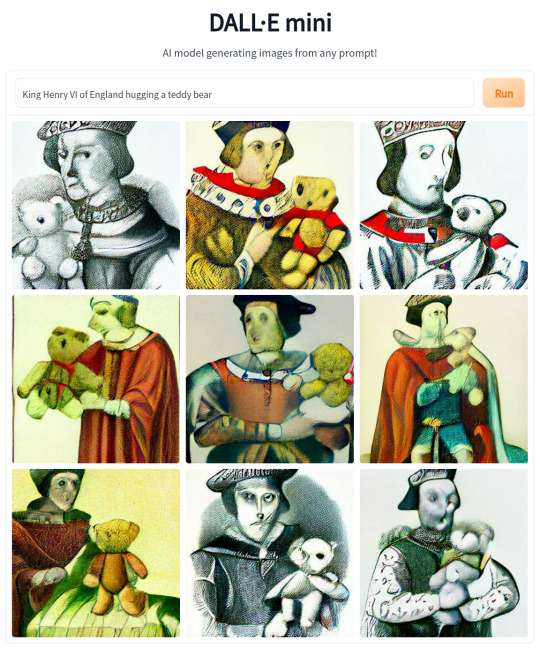
crAIyon version:
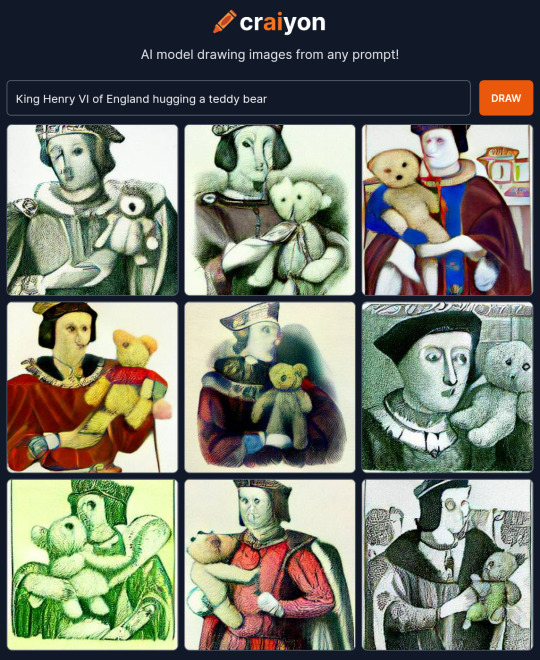
3 notes
·
View notes
Text
Thoughts on King Henry the Sixth Part II Act IV
Okay so it’s been a while. I got addicted to Dimension 20 and forgot how to read. But it’s the first of March, almost the Ides, so I’m back on my Shakespeare kick.
So Act IV opens with a sea battle. It happens almost entirely just off-screen, if only there was a camera panning left or right, you could see the battle, but alas this is a stage. Where we are introduced to… The Captain. No not the guy from How I Met Your Mother, though picturing him as Kyle MacLachlan is fun. He also has this wonderful line:
“The gaudy, blabbing, and remorseful day
Is crept into the bosom of the sea;
And now the loud-howling wolves arouse the jades
That drag the tragic melancholy night”
Which has left all of tumblr poetry shook, scared, and panicking. He’s coming for your gig.
There’s a new(?) character called Walter Whitmore, I kept reading Walter White at first. I ultimately do not care for him.
This whole scene can be summarized really easily: Everyone wants to execute the Duke of Suffolk and the Duke of Suffolk responds “Noooooo.” And then they actually fucking kill him. Legitemately so suprised.
The best line though, because it will be the perfect band name: “And wedded be you to the hags of hell,” So… teenagers everywhere, feel free to use something from there for your garage band.
Also at some point Julius Caesar is referenced, and that just feels like Shakespeare foreshadowing his career.
The next scene introduces a ton of characters including: George Bevis (no Butthead), John Holland, Jack Cade (his name just feels villanous), and Dick (Willy Shakespeare I see what you did there). I thought Smith and Dick were like throwing shade towards Jack Cade as he talks. He would say a line, and then the two would turn towards the camera and say some snarky one liner like “A must needs; for beggary is valiant.” But I think, based on later developments, they were actually hyping him up to the audience.
Later on, while arguing, someone yells out “The first thing we do, let’s kill all the lawyers.” And it feels so nice to know that Shakespeare is a big fan of Crazy Ex-Girlfriend.
A clerk gets introduced, it’s established that he knows how to write his name, and immediately is ordered to be executed. I think Jack Cade might be an anti-intellectual.
Despite that, he at one point pulls out an epic moment of pownage. This one guy, Sir Humphrey Stafford, wanders in. He seems to hate Cade because Cade is claiming to be heir to the throne despite being a plasterer. And when Humphrey points that out, Cade responds to “And Adam was a gardener.” Sometimes a good biblical reference is all you need.
What follows is basically a montage. Scene after scene, almost all are sparse in lines and stage directions. In one scene both Stafford’s (there were two!?) die, but in the stage directions introducing the scene. Jace Cade casually tells Dick “You shalt have a license to kill.” Thus revealing that he is James Bond to the audience.
The Queen wanders in cradling the Duke of Suffolk heads and the King, in his only scene, notices how the Queen is mourning Suffolk more than she will ever morun him. She denies it, I don’t believe her. Also a Messanger says “They call false caterpillars.” I have no idea what it means, but it felt notable.
This random guy Lord Scales appears and says he will send Matthew Gough, Who dies two scene later without saying a line.
In another scene, I hope it was meant to be comedic because I found it hilarious, Jack Cade claims that he should only be called Lord Mortimer, and immediately kills one of his own soilder’s when they run in calling him Jack Cade.
Finally the Duke of Buckingham comes in, with this guy Clifford. Together they are the ambassador to the King. They offer a pardon if the rebels agree to leave. What follows is this fickleness of the masses, where they will cheer for whoever just spoke, even if it immediately contradicts what they just cheered for. Cade berates them, but Clifford seems to win out by getting the masses to part, with many abandoning Cade. Leading to him fleeing.
The King receives a message from the Duke of York, claiming that the Duke of Somerset is a traitor. It would be a dramatic moment… if it wasn’t read right in front of the Duke of Somerset. Maybe take a quick peak around the room before you speak Mr. Messenger.
The last scene. I kid you not. Is a random character named Alexander Iden killing Jack Cade. This guy, introduced (I think), in this Act, literally leads a massive rebellion that could be its own story, and is killed by a character introduced in this very scene. All because Cade hid on this guy's land. And then, like an idiot, Cade reveals his identity when he was stabbed. Instead of denying this guy the reward for his head. Because Cade is an idiot. The anti-intellectual little fuck.
#lit#literature#read along#shakespeare#william shakespeare#war of the roses#books#dimension 20#king henry vi
0 notes